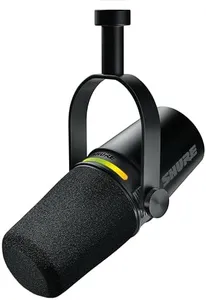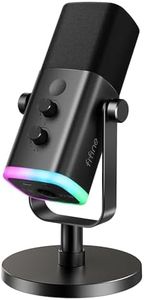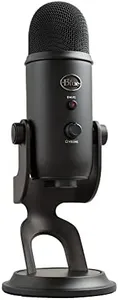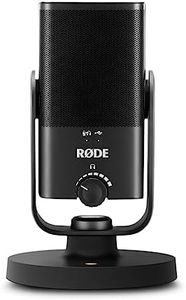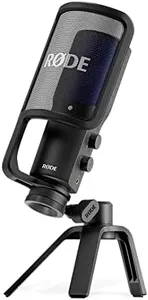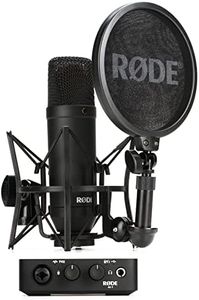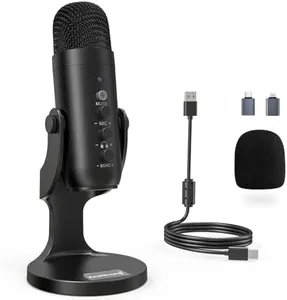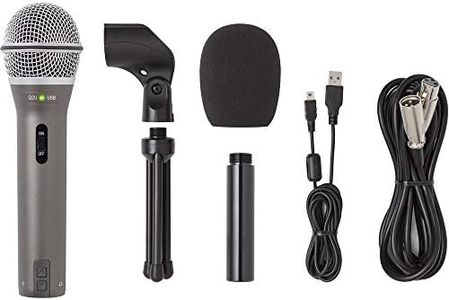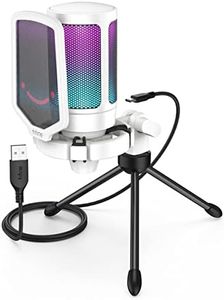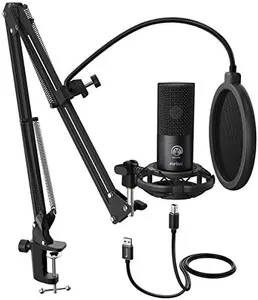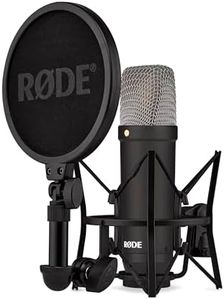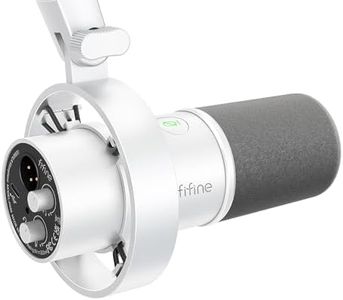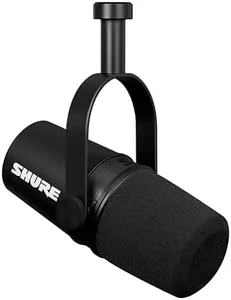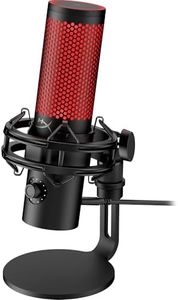We Use CookiesWe use cookies to enhance the security, performance,
functionality and for analytical and promotional activities. By continuing to browse this site you
are agreeing to our privacy policy
10 Best PC microphones
From leading brands and best sellers available on the web.By clicking on a link to a third party's website, log data is shared with that third party.
Buying Guide for the Best PC microphones
Choosing the right PC microphone can make a big difference in your audio quality, whether you're gaming, making video calls, streaming, or recording. It's important to think about how and where you'll use your microphone. The right microphone should capture your voice clearly and fit well with your setup, matching your needs for portability, quality, and convenience. Understanding the main features and specifications will help you make a confident choice and avoid picking something that doesn't suit your use.Microphone TypeMicrophones come in several types, with the most common for PC use being condenser and dynamic microphones. Condenser microphones are more sensitive and pick up richer sound detail, making them a great choice for recording vocals and streaming in quiet environments. Dynamic microphones are less sensitive and often more rugged, which means they handle loud sounds better and are less likely to pick up background noise—a good option for busy or noisy environments. Think about where you'll use the mic: if your space is quiet and you want detailed audio, a condenser might be best; if you deal with background noise or want something durable, go with dynamic.
Polar PatternA microphone's polar pattern determines the direction from which it picks up sound. The most common patterns are cardioid, omnidirectional, and bidirectional. Cardioid mics focus on sound from right in front, reducing unwanted background noise, ideal for solo use like streaming or video calls. Omnidirectional mics pick up sound from all directions, useful for group settings or round-table discussions. Bidirectional picks up sound from the front and back, suited for interviews. Choose a polar pattern based on how many people will use the mic and how much background noise is present during use.
ConnectivityPC microphones most often connect via USB or 3.5mm analog jack. USB microphones are extremely user-friendly—just plug into your computer and go, with built-in digital converters for good sound quality. 3.5mm mics may require extra audio hardware for the best results and can sometimes introduce noise. For most users wanting simplicity and reliable quality, USB is the way to go. If you have an audio interface or need pro-level control, a 3.5mm or XLR connection might be better.
Frequency ResponseFrequency response tells you the range of sounds the microphone can capture, measured in hertz (Hz). A wider frequency response can pick up both deep (bass) and high-pitched (treble) sounds. Most human voices sound good within a range of about 80 Hz to 15 kHz, but music or certain effects might need greater range. If you're using the mic mainly for talking, you don't need the very widest frequency range. For highly detailed vocal or music recording, look for a broader response.
Sensitivity and Noise HandlingSensitivity measures how well the microphone picks up quiet sounds and how much it amplifies your voice. High sensitivity can be good for soft voices, but too much may also capture unwanted background noises. Lower sensitivity can reduce noise but may require you to speak closer or louder. Consider your environment—if it's quiet, higher sensitivity might be fine. In lively or noisy surroundings, go lower to keep the focus on your voice.
Form FactorThe physical design of the microphone impacts how you use it. Stand microphones sit on your desk; they're stable and good for stationary use. Clip-on or lavalier mics attach to clothing and allow hands-free movement, best for presentations or active users. Headset mics combine headphones and a mic, great for gaming or calls but usually offer less audio quality than dedicated microphones. Think about how much desk space you have and whether you need to move around while using the mic to choose the best form factor.
